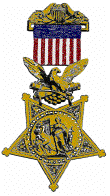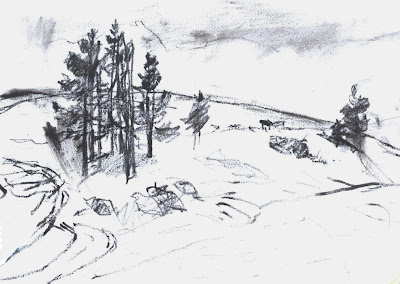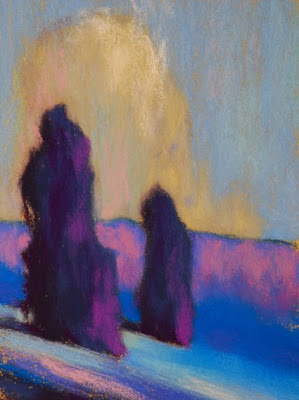 Soft pastels are not very appropriate for drawing details. Choose pencils and hard pastels for smaller details. Here are five tips for the detail-oriented pastel artist.
Soft pastels are not very appropriate for drawing details. Choose pencils and hard pastels for smaller details. Here are five tips for the detail-oriented pastel artist.- Decide ahead of time whether your picture will be finished as a painting or as a drawing. The difference to me is more about lost lines and edges versus outlines. Either result may be achieved with pencils, charcoal and hard pastel. But, keep track of your goal.
- Sharpen your crumbly pastel pencils the old fashioned way. Shave a small portion of the business end of the wooden case from back to front to expose a small tip of pastel. Make sure you get it exposed all around. I use an X-Acto Knife for this. Now, sand the point with a sandpaper sharpener. I re-use mine by stapling hardware store sandpaper to the old board.
- The bigger Derwent Set may be my favorite because it has three values for most of the colors. And I like the consistency.
- Don't forget the invaluable General White Charcoal pencil. Also vine charcoal and compressed charcoal sticks, the latter also comes in white.
- Hard pastels may pleasantly surprise you with the intensity of some pigments. They are traditionally used for blocking in lightly, but I urge you to try them over soft pastels occasionally. The effects are better than many other tools used for moving around and shaping soft pastel.
More than enough knowledge on sharpening pencils-Link. Warning: doll defacement shown.



















































